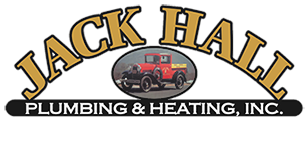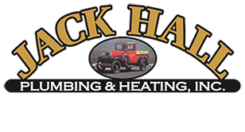Learn these Basic Terms and Acronyms to
Better Understand Your HVAC System
When the Jack Hall Plumbing & Heating team is working on your HVAC system you can be confident we’ll provide clear communication without any unnecessary industry jargon or technical lingo.
But we think it’s also important for our customers to know some basic HVAC terms. This knowledge gives you a better understanding of how an HVAC system works and is also extremely helpful if you are trying to describe an issue to us over the phone, especially on an emergency call.
Know the 5 Key Components of your AC System
Compressor – This component pressurizes the refrigerant in your AC system. Once refrigerant is at the right pressure and temperature, it’s cycled through the rest of the system components, improving your HVAC unit’s energy efficiency.
Evaporator Coil – The evaporator coil evaporates refrigerant and converts it into a gas inside the coil. This reaction causes heat to be drawn into the air conditioner, and as the warm air travels over the coils, the refrigerant inside the coils absorbs the heat and cools off the air before it is sent back into your house.
Condenser Coil – The condenser coil is a part of the outdoor air conditioning unit that releases the heat trapped by the evaporator coils. This heat is exhausted into the air outside your home, so the house remains cool in the summer.
Expansion Valve – The expansion valve allows the refrigerant to enter the coil, increasing the pressure and packing it together tightly. The valve works to expand or contract refrigerant as it moves from the condenser coil to the evaporator coil, allowing the cooling process to start.
Blower Motor and Fan – Once your AC unit cools off the air inside of it, it needs to get that cool air out to the rooms of your home. The blower motor pumps the warm or cold air from your HVAC unit throughout your home. The blower fans move warm and cool air throughout your home and distribute it evenly to maintain the set thermostat temperature.
HVAC Acronyms You Should Learn ASAP
IAQ – Indoor air quality is critical to the health and well-being of your family. If an HVAC technician refers to IAQ equipment, they’re likely talking about air cleaners, air purifiers, dehumidifiers, humidifiers, and ventilation equipment.
BTU – A British Thermal Unit is a measurement that gauges how much heat energy a furnace can add or how much heat an AC unit can remove from your home in one hour.
SEER – A Seasonal Energy Efficiency Ratio measures how efficient a cooling system is. A SEER rating is calculated by dividing the unit’s cooling output by the total energy used.
AFUE – Annual Fuel Utilization Efficiency measures the efficiency of your furnace during the winter heating season. A properly functioning heating system converts a greater percentage of fuel into usable heat, lowering energy use and reducing the power bill.
CFM – Cubic Feet per Minute measures how much air volume a heating and cooling system can circulate in a given time. A typical HVAC unit can produce 400 CFM per ton of unit capacity in the average-sized home.
Make These Commonly Used Terms Part of Your HVAC Vocabulary
Thermostat – This is the “brain” of your HVAC system. It controls the temperature in your home and makes adjustments by signaling when the heat or air conditioner needs to turn on to maintain a set temperature.
Damper – An HVAC zoning system boosts your home’s comfort and energy efficiency by controlling when and where heating and cooling occurs. The system uses a programmable thermostat and dampers, which are movable plates or valves in the ductwork that direct airflow to specific “zones” of the home.
Flue: A vent or exhaust pipe for expelling gases from your furnace to the outdoors. They are designed to safely remove the byproducts of combustion (such as carbon monoxide) and preserve indoor air quality.
Drain Line: This pipe that drains condensation from the evaporator coil. These are easy to identify, and when they get clogged, are one of the most common issues that trigger HVAC repairs. Good drainage promotes smooth operation for your AC unit, so don’t forget to schedule a maintenance call.
Filter: Filters catch airborne dust and debris particles and prevent them from affecting HVAC system components. Failing to change the filter regularly decreases the unit’s efficiency and eventually causes damage.
At Jack Hall Plumbing & Heating, our team works hard to communicate clearly with our customers. We’re always available to answer questions, and our licensed technicians can explain every aspect of an installation, upgrade, or repair. Call us at (518) 792-7114 or contact us online to learn more about our HVAC services in South Glens Falls, Queensbury, Lake George, Schuylerville, Ballston Spa and across the North Country.


